PROTECT YOUR DNA WITH QUANTUM TECHNOLOGY
Orgo-Life the new way to the future Advertising by AdpathwayBlue-tinged leaves outshine green-leaved plants in the home garden. They’re unique and colorful, and they make a statement simply by existing! Choose plants with different-colored foliage to rejuvenate your garden.
The best foliage for your yard depends on your setup and specific needs. Large spaces can house big trees and shrubs, while small gardens and apartments are more suitable for perennials, annuals, and bulbs.
No matter the size of your garden, plants with blue foliage will help boost the curb appeal of your front yard. In the backyard, the color provides a lush display that complements your other perennials and annuals. Start with a new type, then add more species to your yard as you find other cultivars.
Lacinato Dinosaur Kale
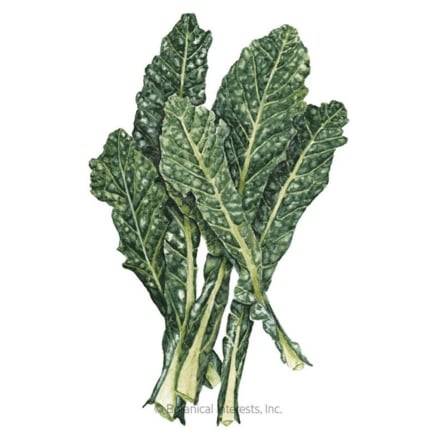
Lacinato Dinosaur Kale Seeds
Dazzling Blue Kale

Dwarf Blue Curled Kale
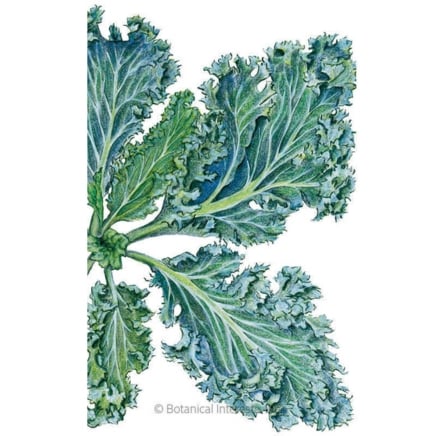
Dwarf Blue Curled Kale Seeds
Trees
Trees are the backbone of the garden. They fill empty spaces with their woody branches and lush foliage, and they last for many years. These evergreen plants retain their blue foliage throughout the year, and they thrive in many parts of the U.S.
Blue Atlas Cedar
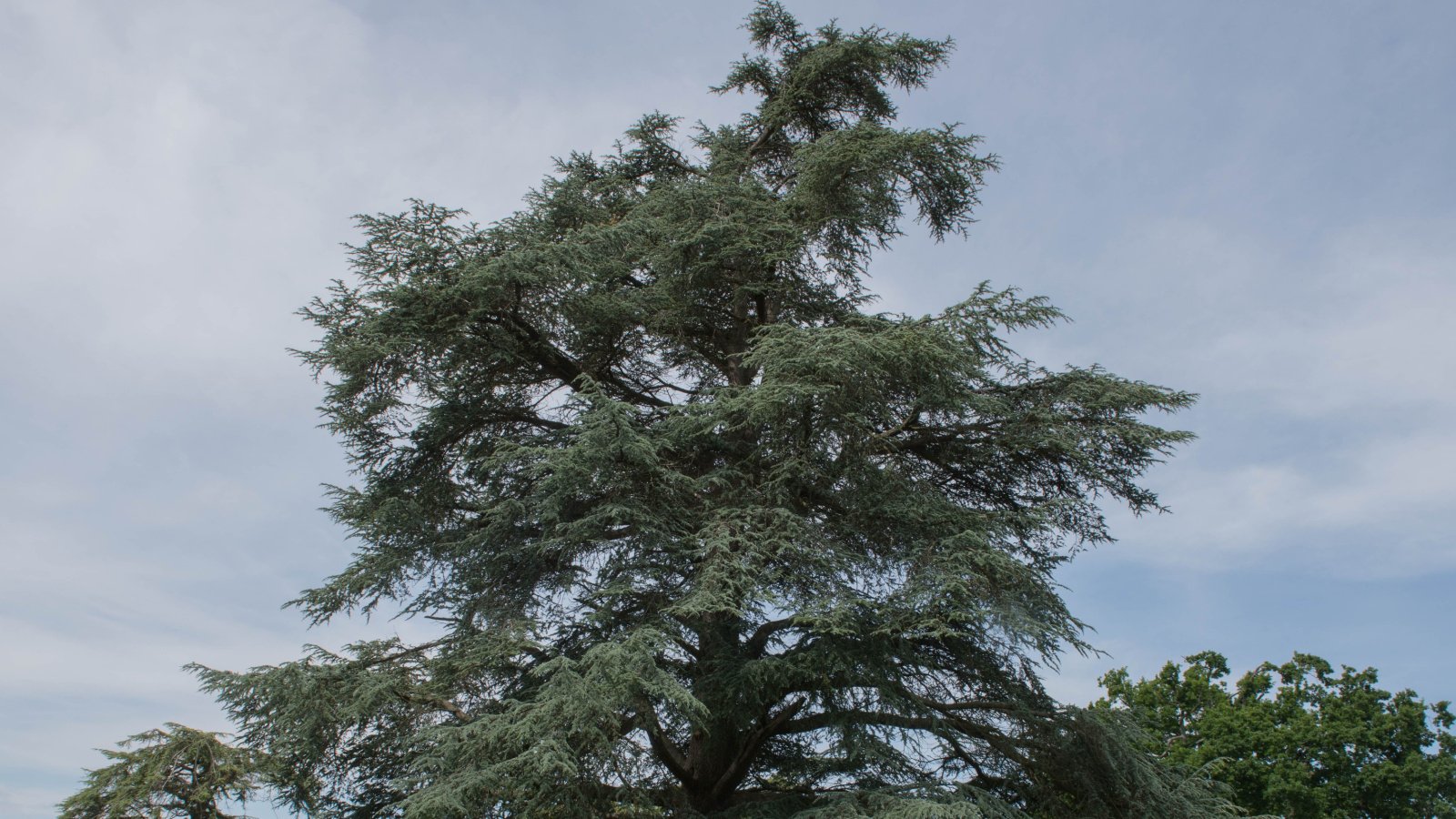 Lower limbs can be pruned to improve structure.
Lower limbs can be pruned to improve structure.Cedars are aromatic and stately. Crush some of their leaves to enjoy the natural fragrance. Though most cedars have green foliage, the blue atlas cedar has bluish needles throughout the year. They turn bluer in winter as cold temperatures and frosts grow more frequent.
This true cedar needs well-drained soil to thrive, and it’ll reach epic proportions in the yard. Grow it in an open space where its branches can spread tall and wide. For the best, open appearance, plant the tree in a spot where it can grow uninhibited without pruning.
Colorado Blue Spruce
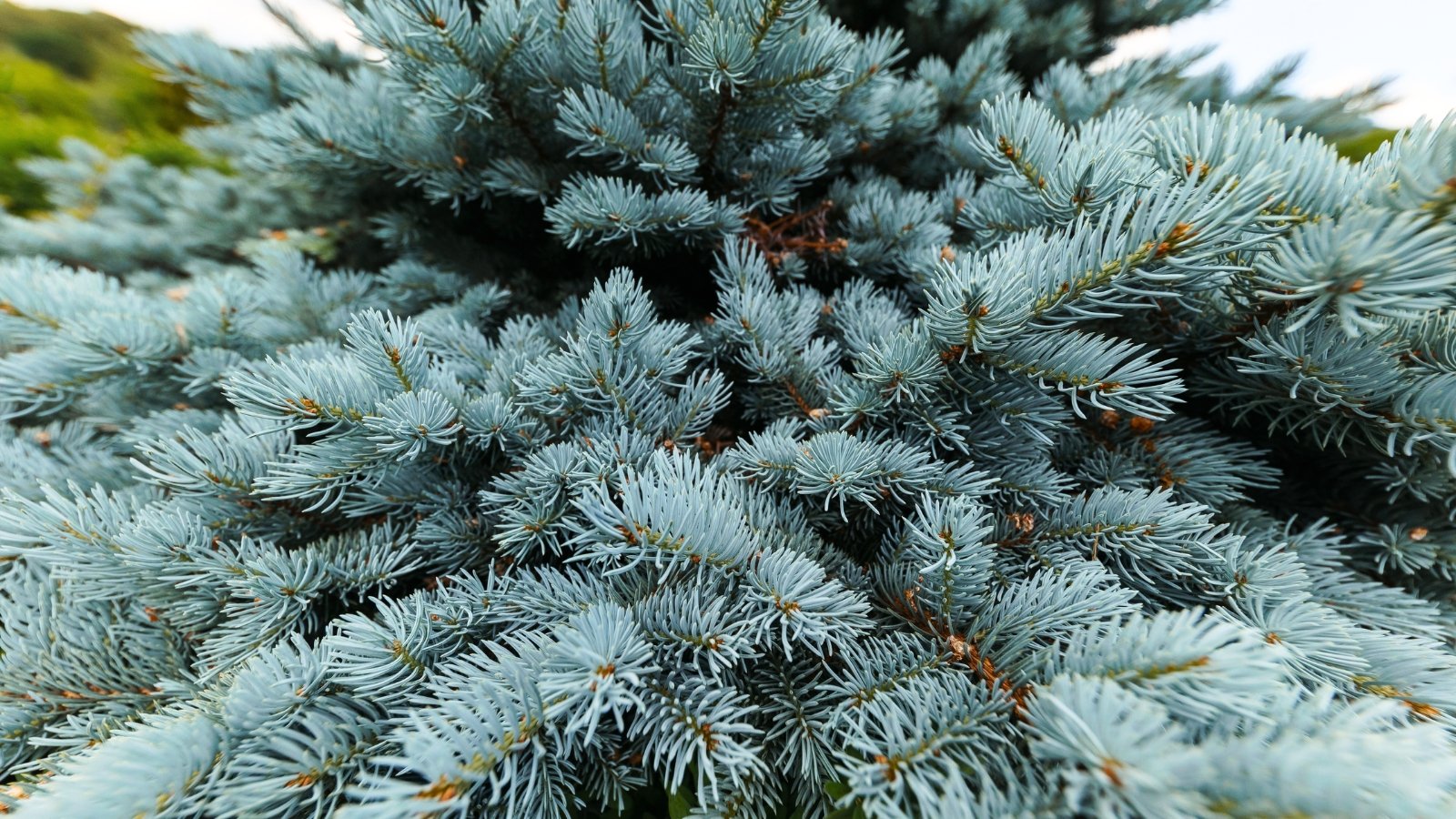 Broad lower branches create natural fullness near the base.
Broad lower branches create natural fullness near the base.The Colorado blue spruce is another attractive evergreen plant with blue foliage. It retains its pyramidal form in maturity; it’ll look like a typical Christmas tree with broad lower branches and short ones on top.
In the yard, this spruce is upright and stately. It needs well-drained soil and cold weather to thrive, and it struggles in warm, southern climates. Use it as a focal point, or plant many in a row to create a living fence.
Juniper ‘Blue Arrow’
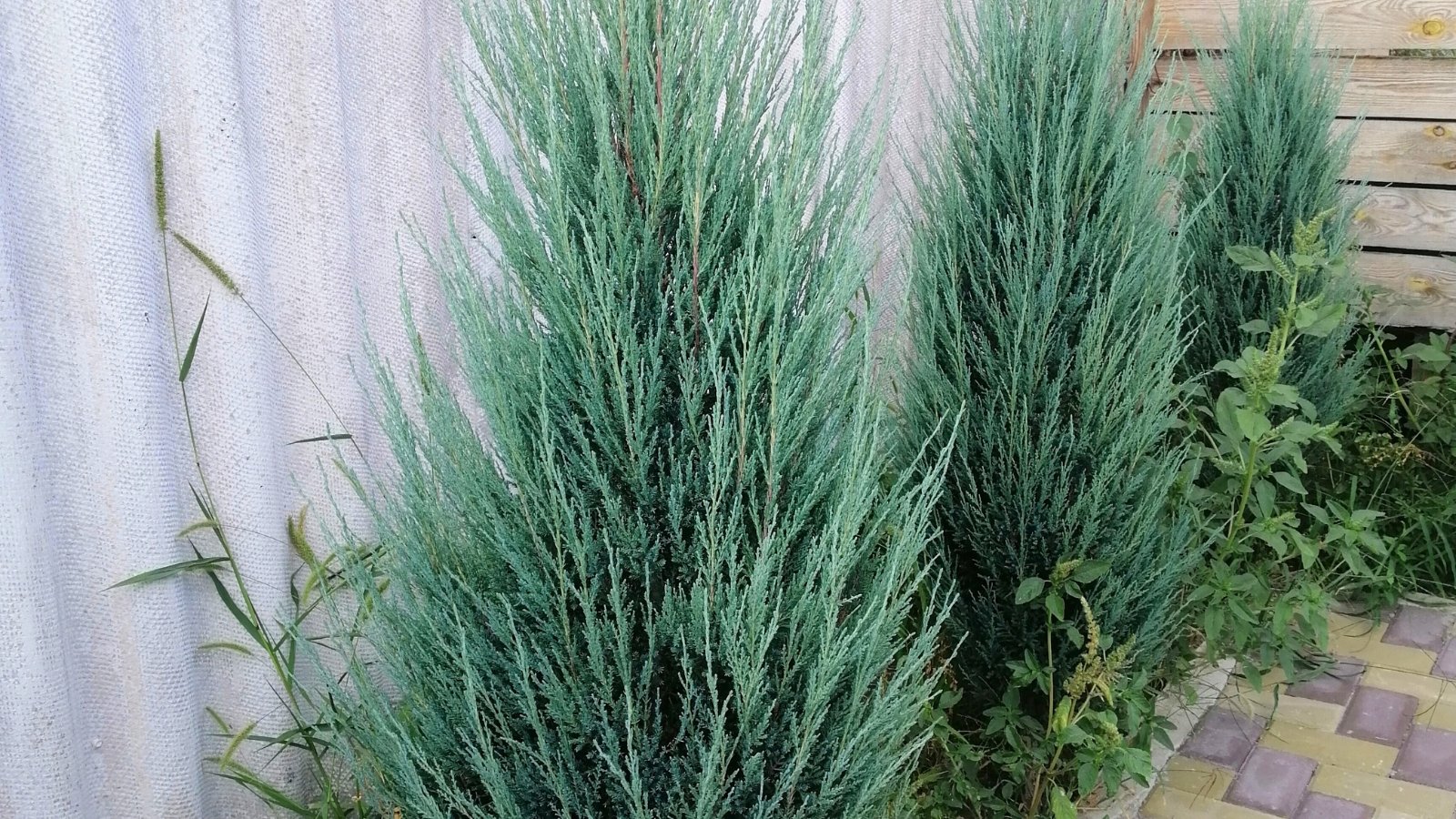 Upright juniper adds structure along garden paths.
Upright juniper adds structure along garden paths.‘Blue Arrow’ juniper grows upright and erect. It’s a columnar variety that grows tall rather than wide. Lush, silvery-bluish scaly foliage adorns the tree’s bright brown bark.
As with most junipers, this variety prefers growing in free-draining soil in a sunny spot of the yard. It’ll fare well when young in containers, though it’ll eventually prefer to grow in the ground. It’s perfect for making a living fence or lining a walkway.
Shrubs
Woody shrubs grow wide rather than tall. Their dense growth provides habitat for birds and wildlife, and their blooms attract pollinators. A shrub with blue foliage is a rare sight to see, yet these three defy the odds with their brilliant leaves.
Dwarf Fothergilla ‘Blue Mist’
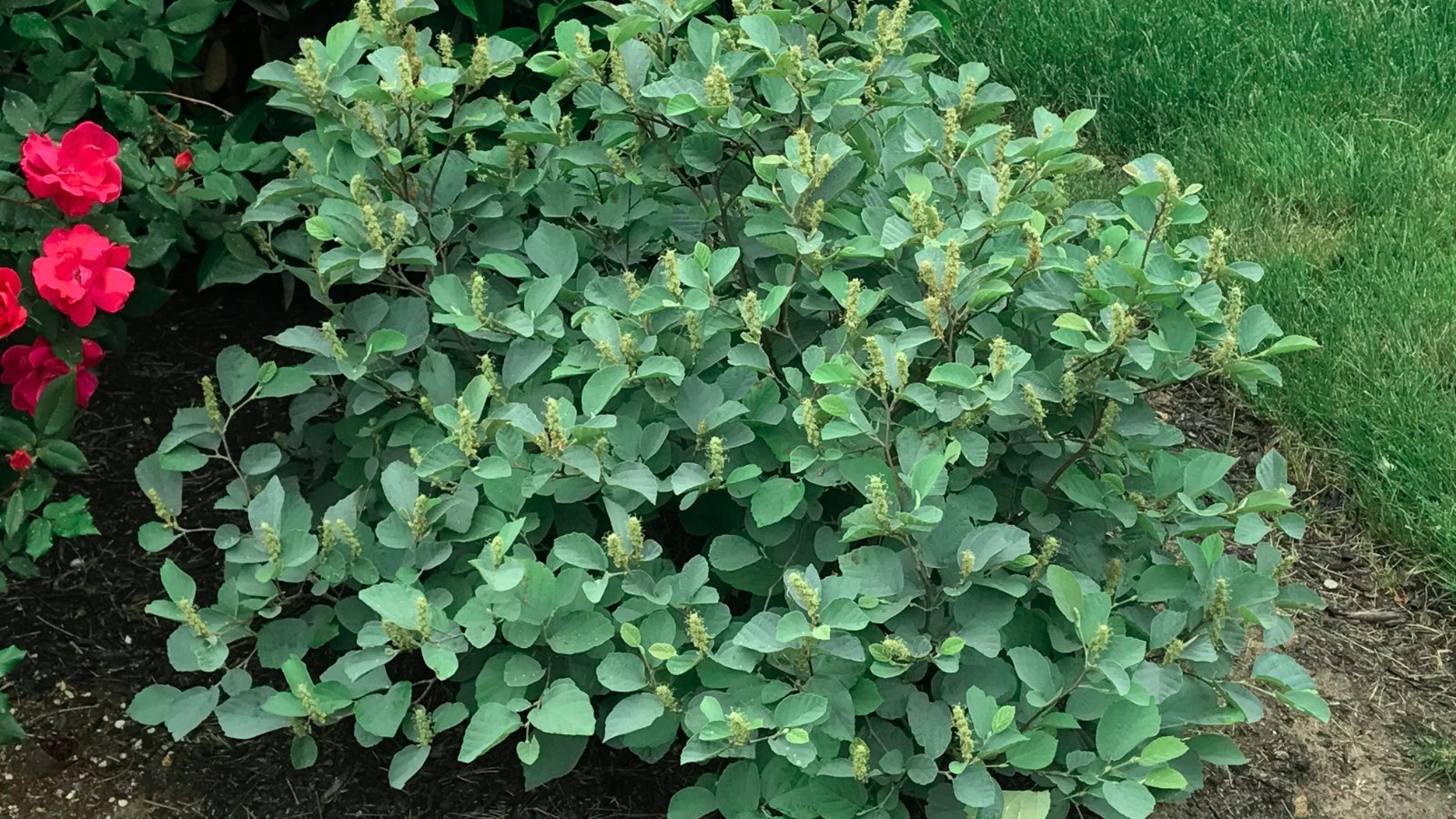 Matures under four feet, fitting small garden spaces.
Matures under four feet, fitting small garden spaces.Fothergilla shrubs have all-season interest. They grow frilly white flowers with incredible fragrance in late winter through early spring on bare branches.
New leaves sprout shortly after, and they change into lovely shades of red, yellow, and orange in the fall. When they drop, they reveal ornamental gray bark that provides structure in the winter garden.
‘Blue Mist’ differs from other fothergillas with its foliage color. Instead of deep green, the foliage is silvery bluish-green in the summer. The shrub will stay under three feet tall in most gardens, though it can reach four feet tall and wide in maturity.
Sawara Cypress ‘Blue Moon’
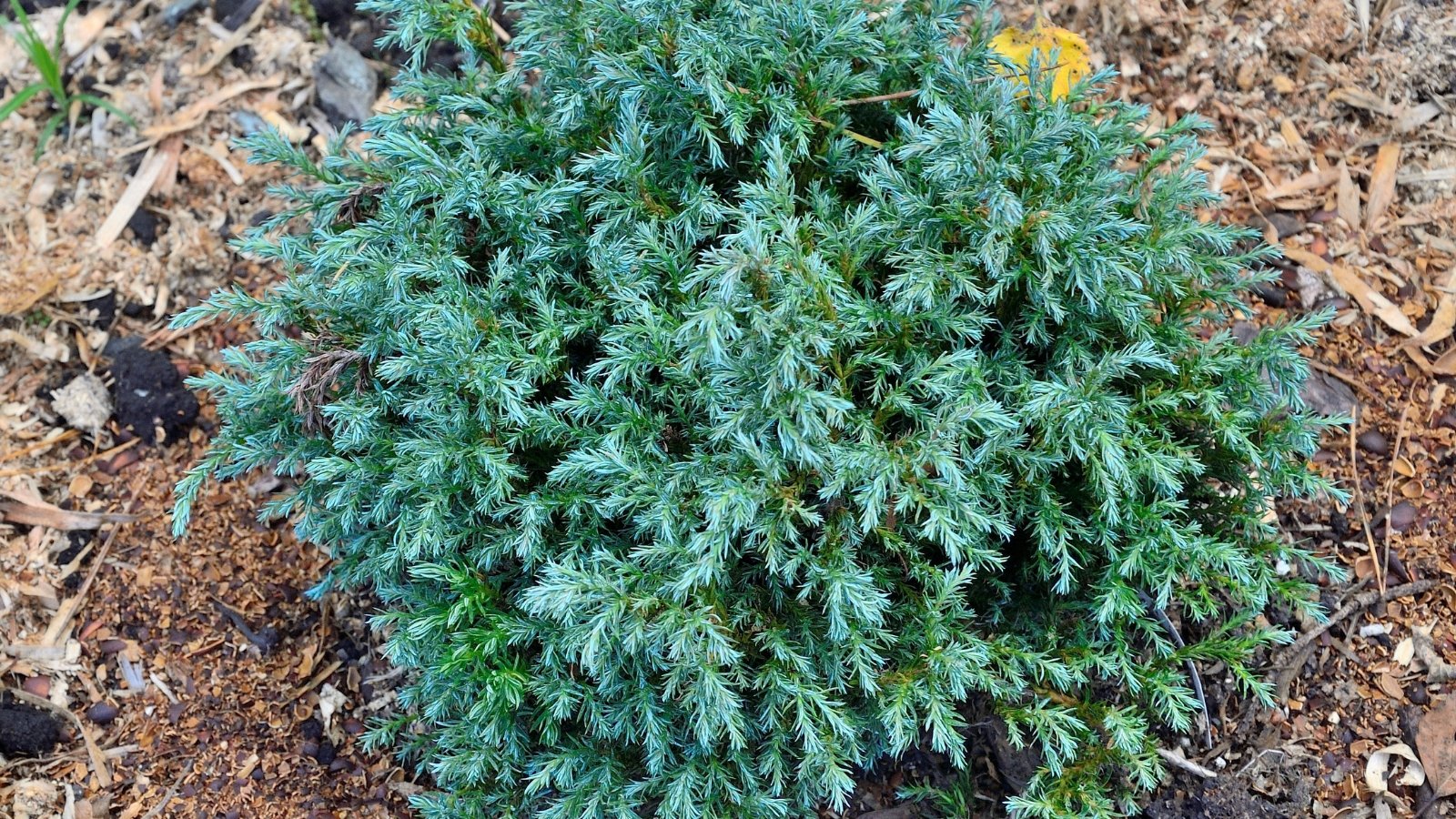 Dwarf cultivar fits beautifully in containers or borders.
Dwarf cultivar fits beautifully in containers or borders.The Sawara cypress is a large, evergreen conifer. ‘Blue Moon’ is a dwarf cultivar that stays under four feet in maturity. It’s a choice selection for the home garden, as it stays dense, short, and bushy.
This dwarf plant’s blue foliage stands out in the garden. It’ll form a tight, round ball over time, and you won’t have to prune it much to retain the shape.
Prostrate Noble Fir
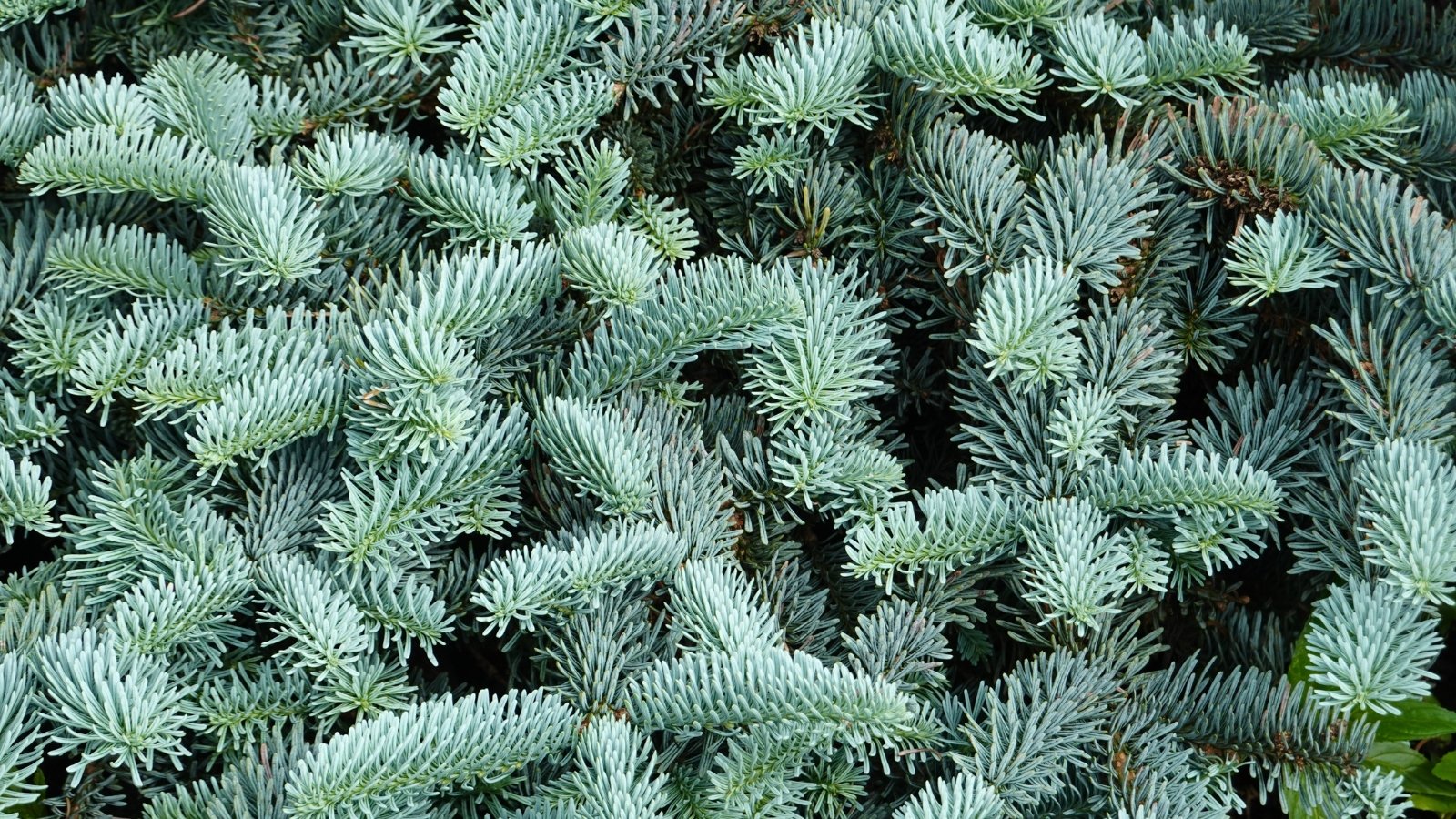 Prune leaders carefully to keep a classic low shape.
Prune leaders carefully to keep a classic low shape.Noble firs are giant trees in the wild! The prostrate noble fir condenses the beauty of these trees into a dwarf cultivar that stays under three feet tall. Its needles are silver-blue, and they retain their color year-round.
This fir needs cool temperatures and superb drainage to thrive. It may produce a tall leader that grows above the other branches. Simply prune these off to maintain the characteristic low, wide shape.
Perennials
Perennials are essential additions to the garden. These three perennial plants work well in a variety of gardens, from the southern to the northern U.S. Choose a succulent for mild climates, or opt for an herbaceous perennial in regions with frosty winters.
Blue Chalksticks
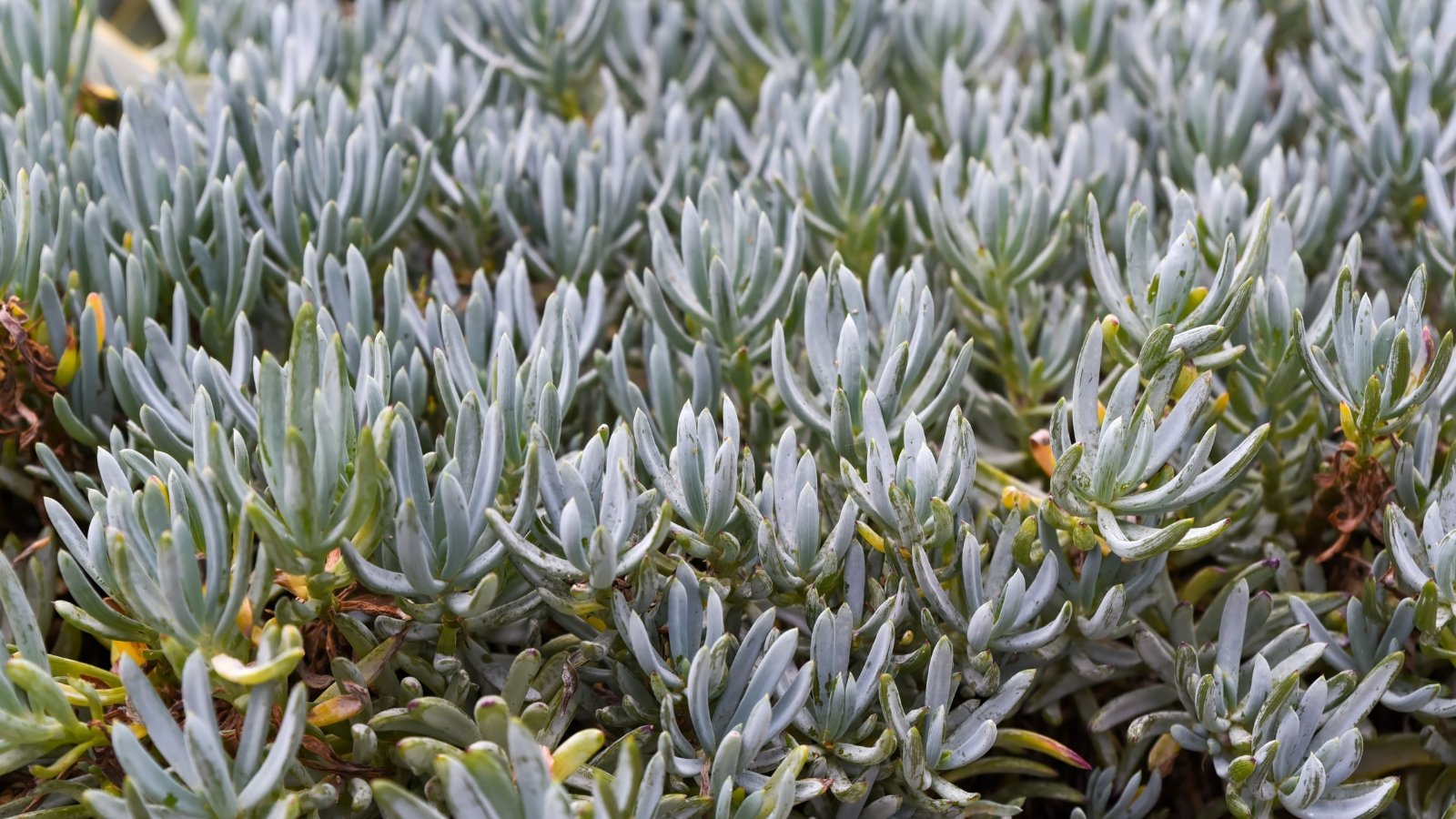 Ideal for containers in colder winter climates indoors.
Ideal for containers in colder winter climates indoors.Blue chalksticks are iconic succulents on the West Coast. Many growers and landscapers plant them, and they spread to blanket dunes, coastlines, and the sides of freeways. They’re a favorite for their giant, bluish-silver, and fleshy leaves.
These plants with blue foliage will spread over time if you don’t contain them. Let them grow, or prune them and compost the cuttings. In cold regions, grow the plant in a container and bring it inside for the winter.
Creeping Spurge
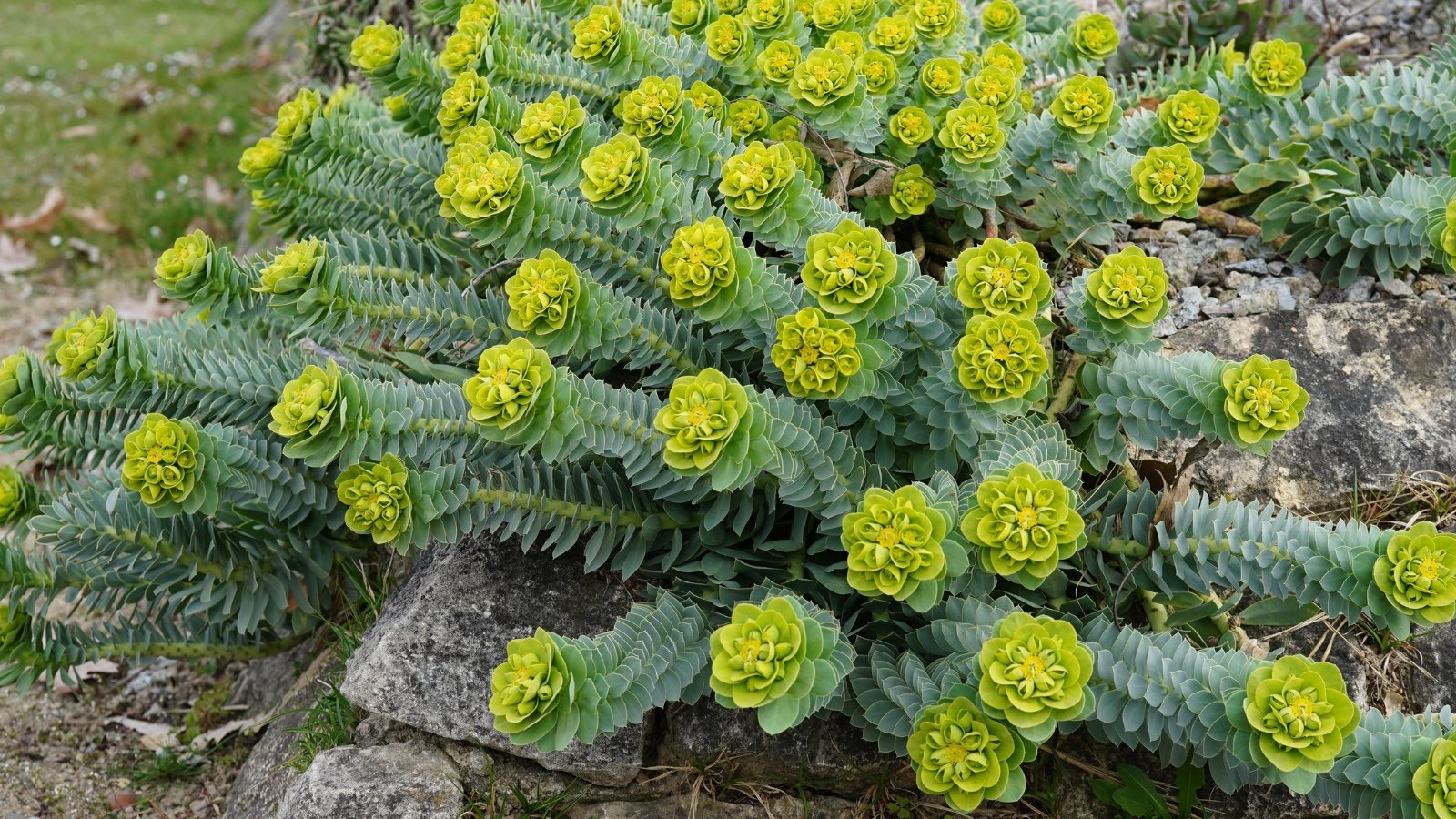 Limit expansion to enjoy vibrant leaves without chaos.
Limit expansion to enjoy vibrant leaves without chaos.This creeping perennial may be a nuisance in some regions. Its leaves retain a lovely shade of blue during the growing season, but the plants spread and can overtake other plants in the garden. Limit its spread to enjoy its beautiful foliage hassle-free.
A spurge, this creeper prefers well-drained soil and plenty of sunlight. Grow it in a well-lit location. To limit its spread with minimal pruning, plant it in a wide container or raised planter.
Hosta ‘Blue Mouse Ears’
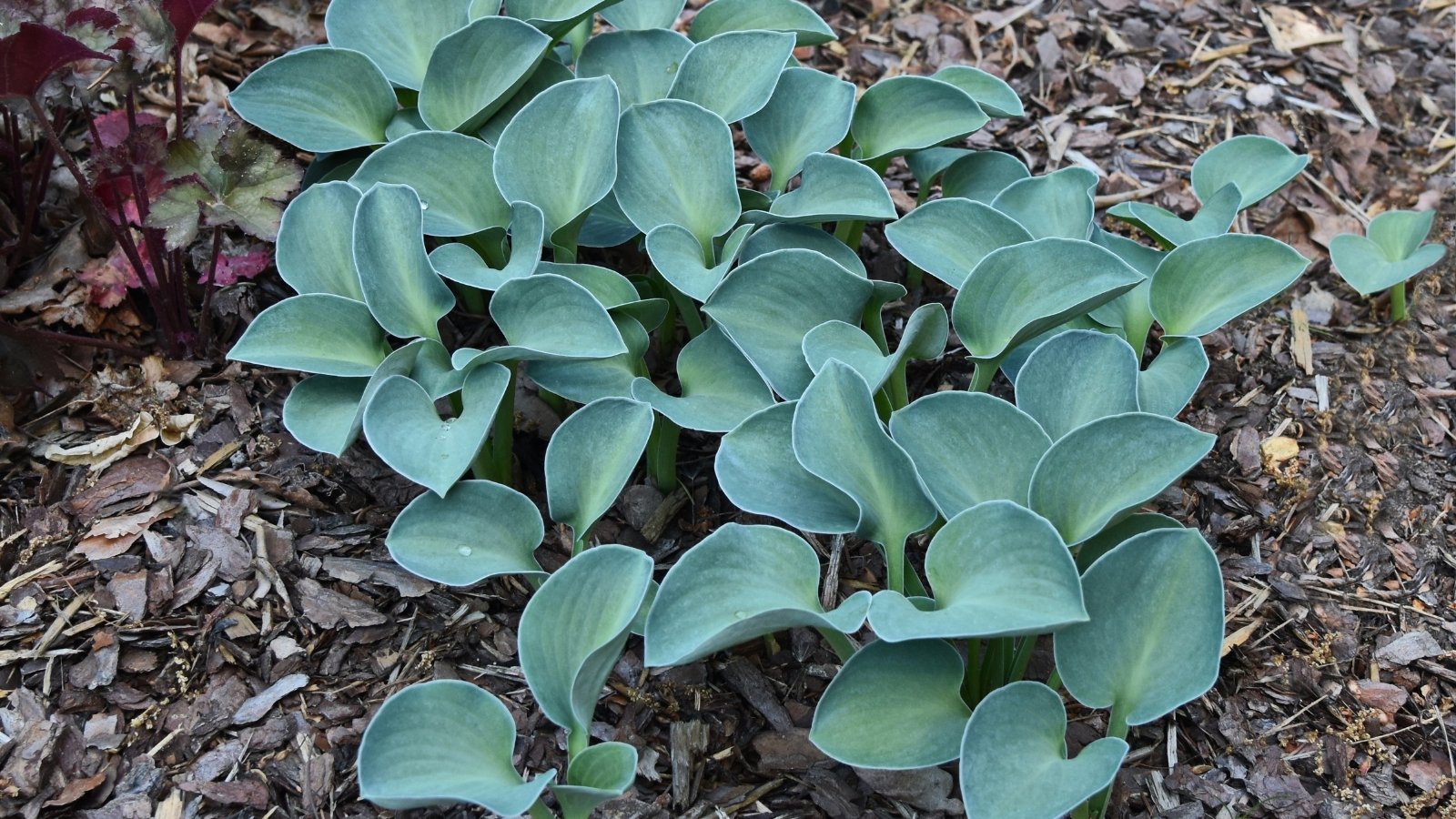 Compact mounds add interest between stepping stones beautifully.
Compact mounds add interest between stepping stones beautifully.‘Blue Mouse Ears’ is a dwarf hosta cultivar that stays under a foot tall in maturity. It’ll form tight clumps over time that form a lush, low-growing mound of foliage. In early spring, pink-purple flowers emerge from the stems that attract pollinators.
This variety earns its name for the way the foliage resembles mouse ears. The leaves are spoon-shaped and smaller than most other hostas. Choose these plants for blue foliage in shady spots.
Grasses
Grasses and grass-like plants provide texture and color in the garden. They’re often forgotten, but they’re essential for mixing up the look of flowering beds and planters. Use these off-color grasses to paint your garden like a canvas.
Blue Fescue
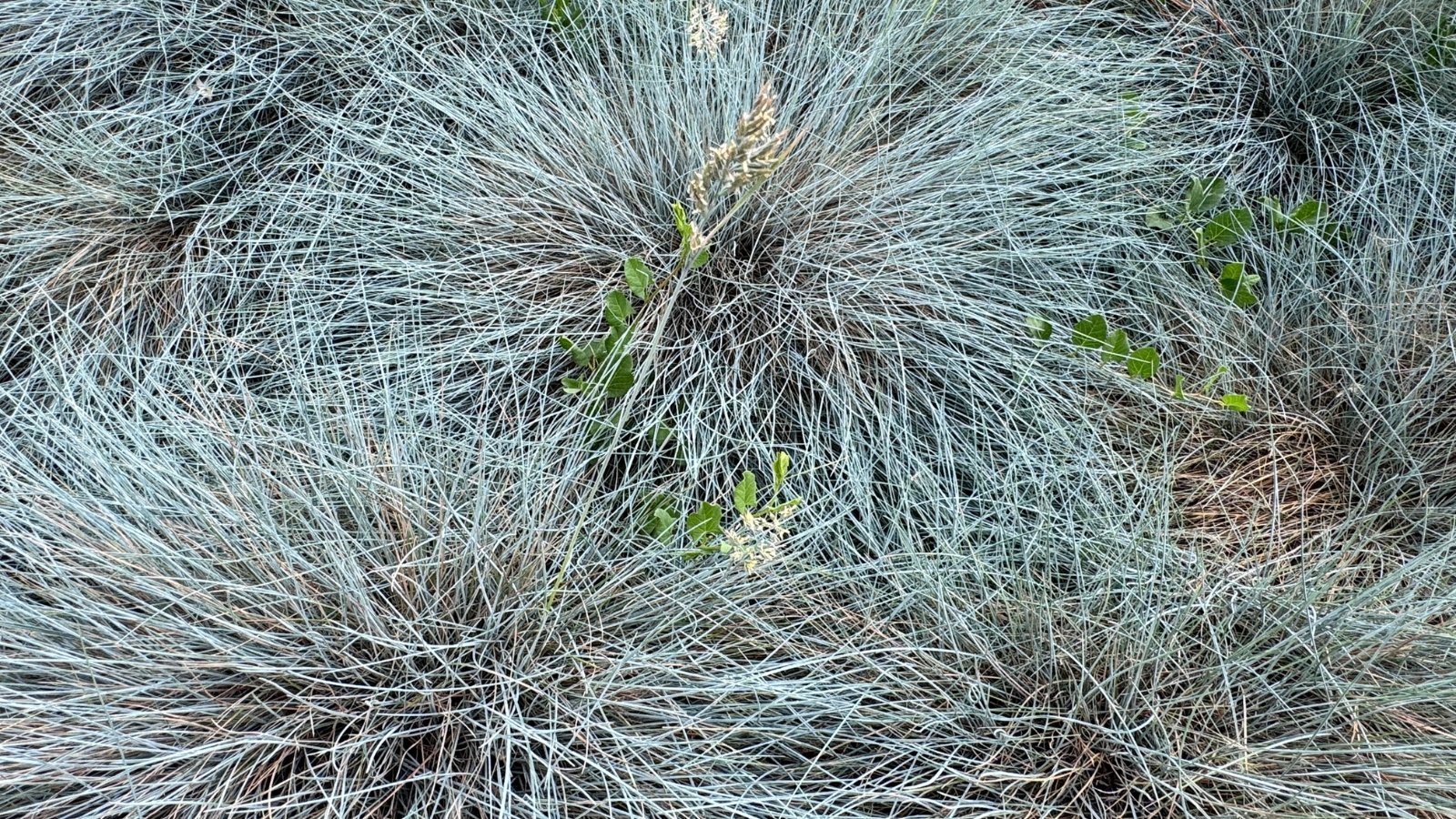 Densely packed tufts add texture to garden edges.
Densely packed tufts add texture to garden edges.Blue fescue is a true grass with needle-like leaves. The foliage sprouts in a dense clump that widens slightly with age. Scatter a few plants about the yard, or grow them en masse in a large-scale planting.
To keep this dwarf fescue happy, divide each clump every two to three years. The inner portions tend to die out over time. Or, let the grasses reseed themselves in an irregular, natural fashion.
Blue Oat Grass
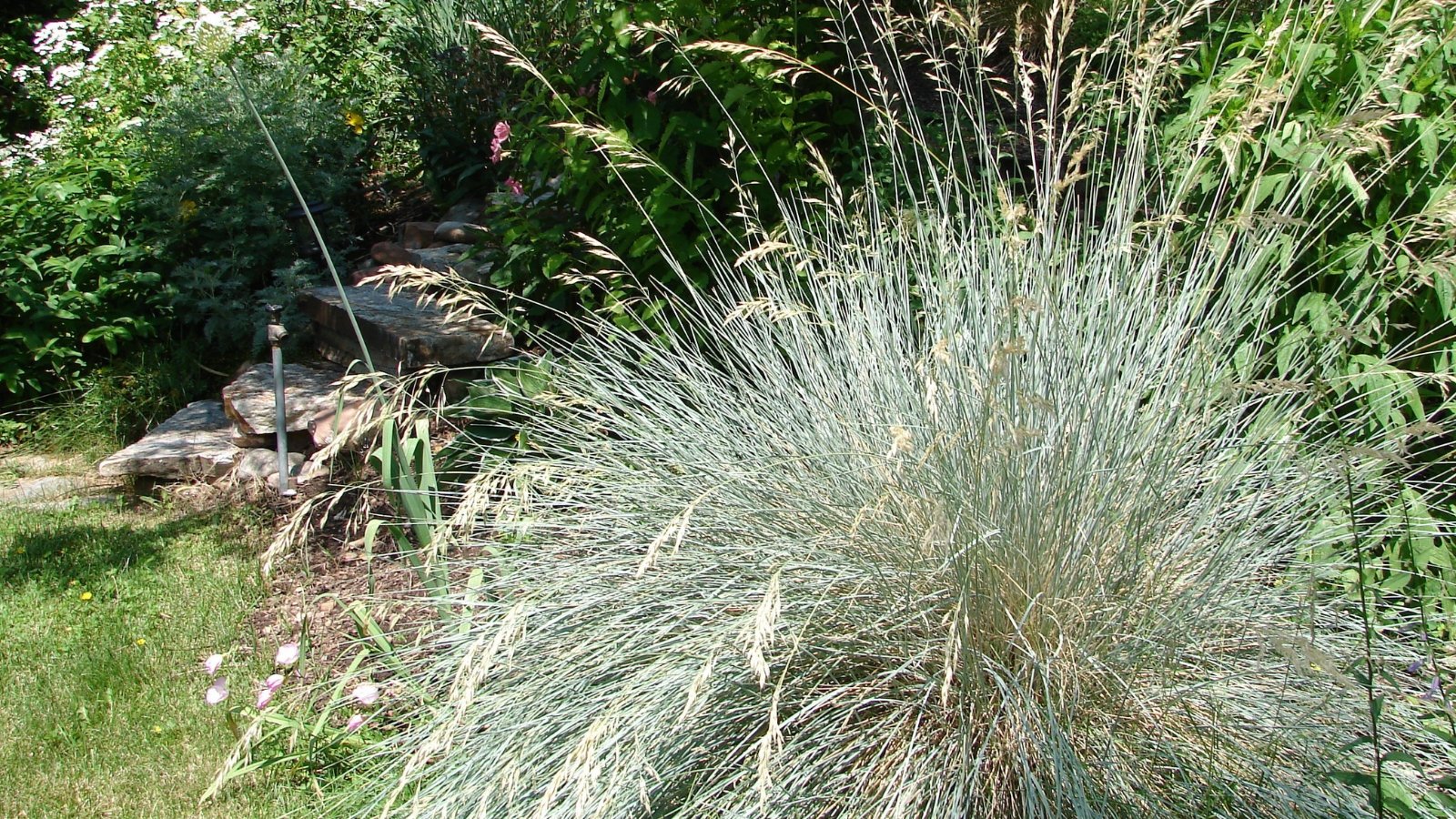 Plant in groups for a wild, natural effect.
Plant in groups for a wild, natural effect.Blue oat grass is similar to the fescue, except it grows taller and wider over time. Its leaves are much stiffer than the fescue’s, and they retain their color throughout the warm months. The best color occurs in dry soils.
Grow these plants with blue foliage in well-drained soil to prevent rot from occurring. If the soil is full of clay and too dense, amend it with compost ahead of planting.
As with the previous grass, you may use this species for specimen plantings or en masse with other grasses. It pairs well with green grasses to form natural-style plantings that match wild landscapes.
Spreading Rush
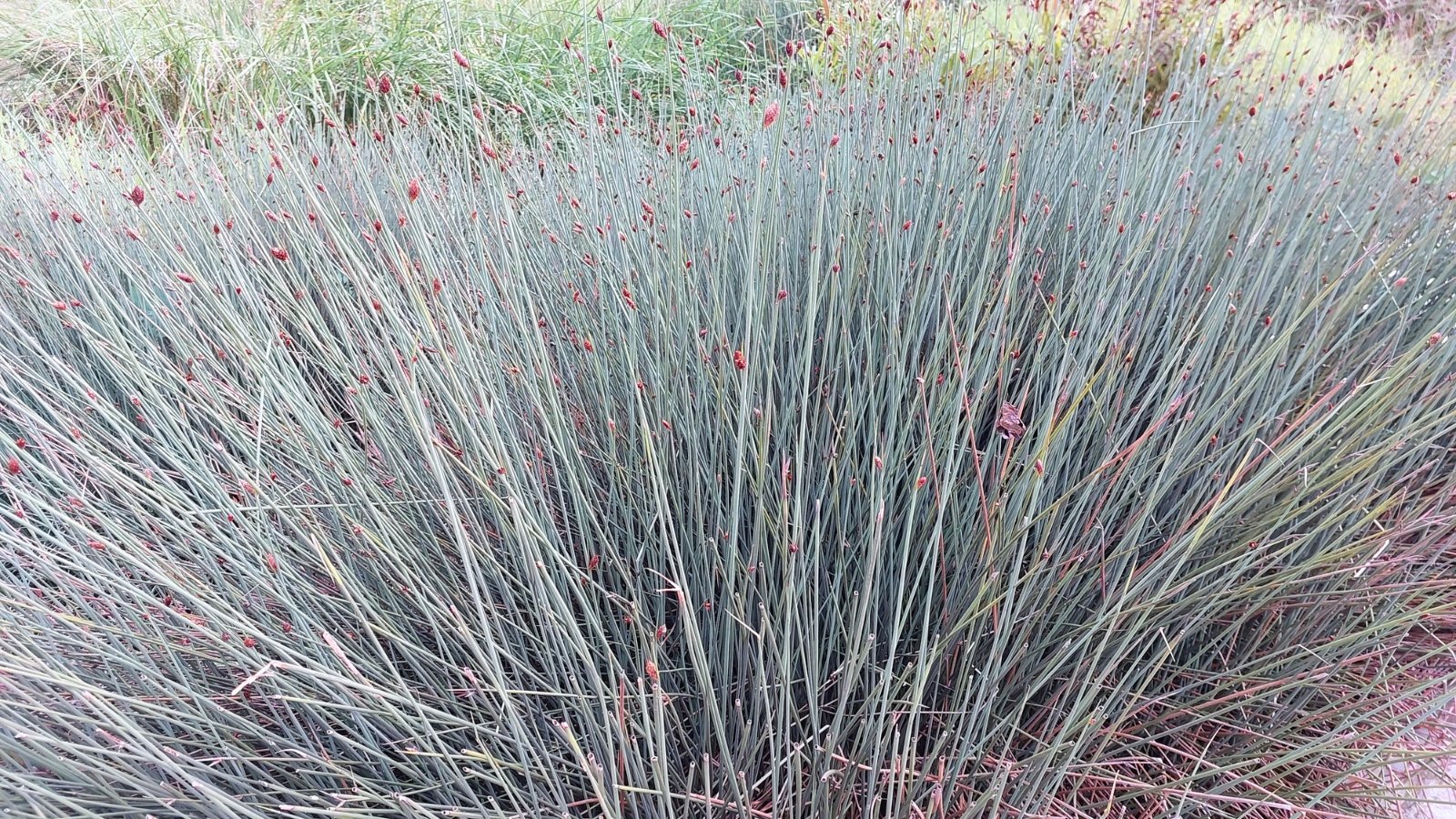 Cylindrical leaves sway gracefully in wet, sunny areas.
Cylindrical leaves sway gracefully in wet, sunny areas.Spreading rush isn’t a grass species; it’s a grass-like perennial. It forms cylindrical leaves that resemble grass blades. In spring, flowers emerge that turn into decorative seed heads.
Rush prefers growing in wet conditions with plenty of sunlight. It’ll tolerate dry shade, though it prefers growing in consistently moist soil.
Divide the rush every so often to keep the clumps growing well. They may suffer from dieback over time if the outer portions crowd the inner crowns.
Bulbs
Bulbs provide color in the garden with little labor on the gardener’s part. They’re essential in the spring garden, and many grow well in the ground or in planters. We include two here, one that blooms in spring and another that flowers later in the season.
Greigii Tulip
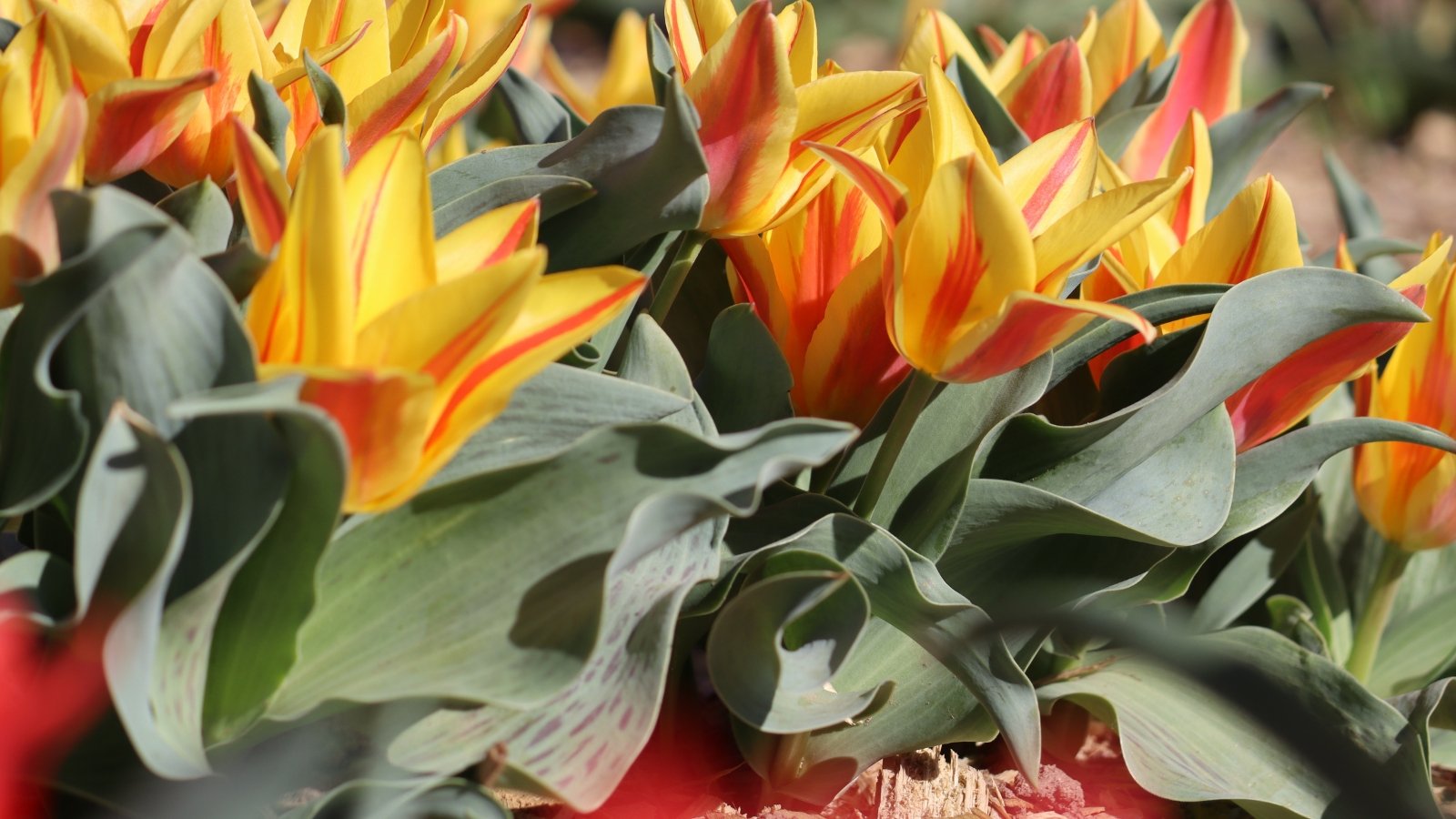 Tulips flourish with proper cold treatment and winter chill.
Tulips flourish with proper cold treatment and winter chill.Greigii tulips are unlike any other tulip! They feature stunning red flowers and bluish-green leaves with maroon stripes. Different varieties offer blooms in shades of white, red, pink, and salmon.
Tulips thrive in cold climates, and they may not last in hot regions without winter chill. Use them as annuals in mild climates, and refrigerate the bulbs before planting if they’re not pre-chilled.
In regions where it’s hardy, plant Greigii tulips in the fall for late winter blooms. The bulbs will propagate themselves underground and form small clumps of blooms and foliage.
Starry False Solomon’s Seal ‘Blue Dune’
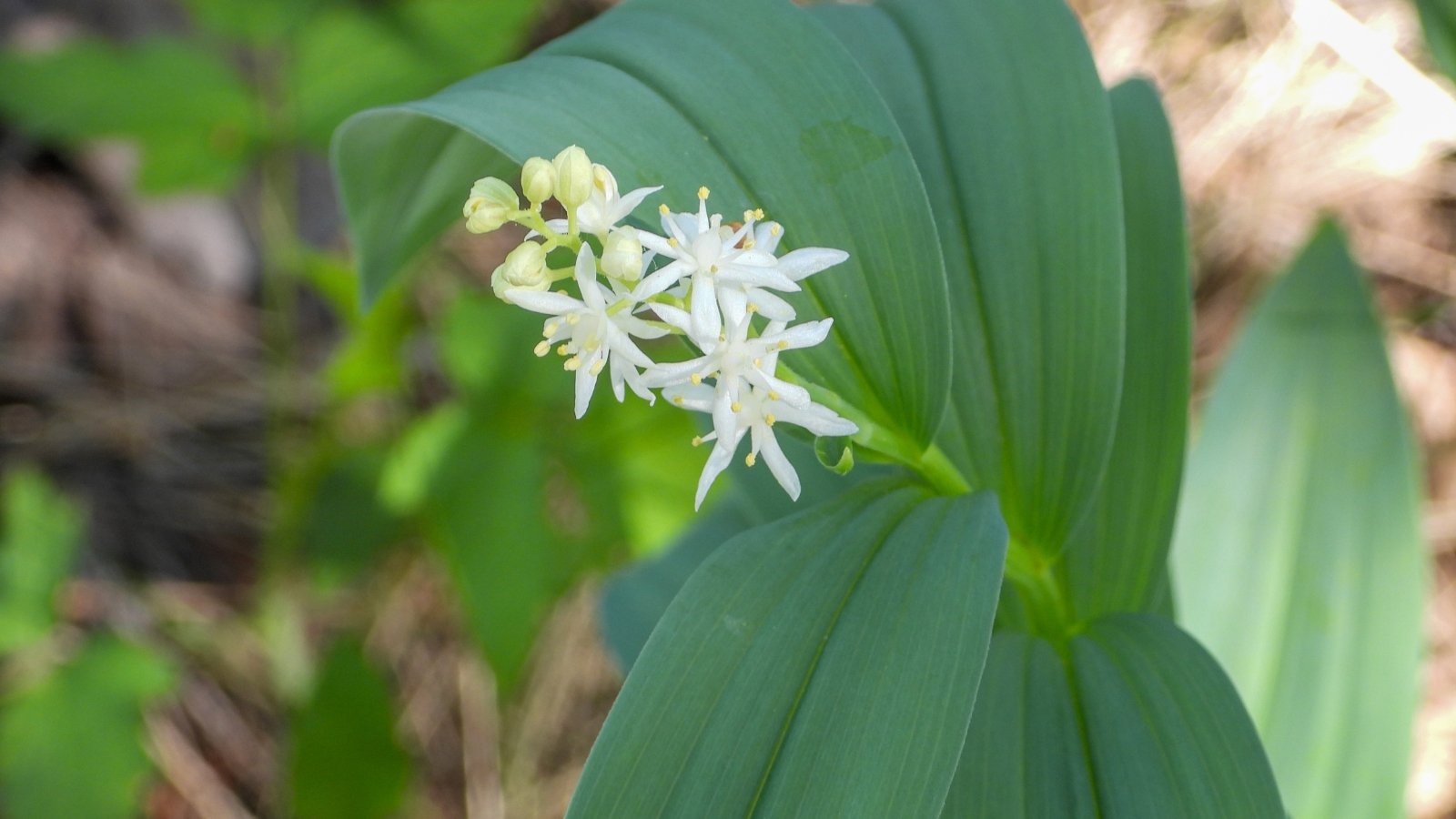 Low-growing habit makes it perfect for under trees.
Low-growing habit makes it perfect for under trees.Starry false Solomon’s seal is a native plant in most of the U.S. It’s a gorgeous, low-growing perennial with rhizomatous roots that resemble bulbs. ‘Blue Dune’ is one of the special plants with blue foliage instead of light green.
In late spring, white flowers emerge that resemble stars. They feed pollinators like bumblebees and insects. They fade, and berries grow that feed hungry birds and mammals.
Give this variety consistent moisture in the shady side of your yard. It’ll perform well alongside hostas and ferns underneath taller trees and woody plants.
Annuals
These annuals are technically biennials. Gardeners grow these kale varieties as annuals for their tender, edible leaves. Use them as vegetables or ornamental plants during the cool months, as they’re more frost-hardy than most other crops.
Dinosaur Kale
 Crinkly leaves curl beautifully after morning garden dew.
Crinkly leaves curl beautifully after morning garden dew.Dinosaur kale is a cold-hardy leafy vegetable with crinkly foliage. Each leaf resembles a dinosaur’s skin with a pebbled texture. Use them fresh or cooked in your favorite recipes.
In the garden, kale needs plenty of sunlight and moisture to thrive. Mulch above its roots in the fall to safeguard the plant against the oncoming frosts and freezes of the winter season.
Kale ‘Dazzling Blue’
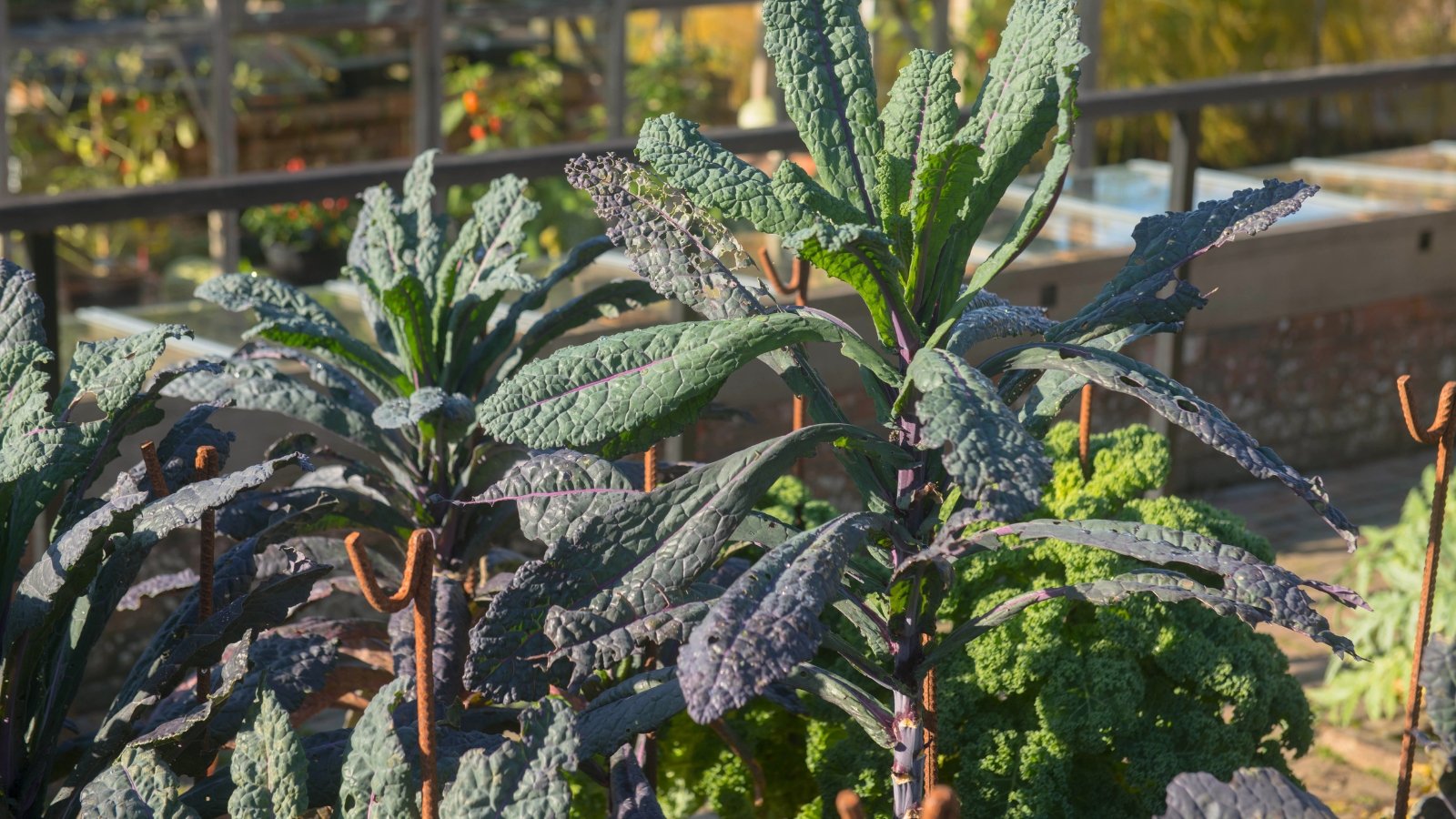 Hardy foliage holds its color well throughout the season.
Hardy foliage holds its color well throughout the season.‘Dazzling Blue’ is dazzling, indeed! Its bluish-green leaves turn a purple hue after frosty weather. They have purple veins that contrast beautifully with the color of the foliage.
This cultivar is as tasty as it is gorgeous. Use it with other greens in a fresh salad, or chop the foliage and cook it like spinach in casseroles, soups, and sautés.
Kale ‘Dwarf Blue Curled’
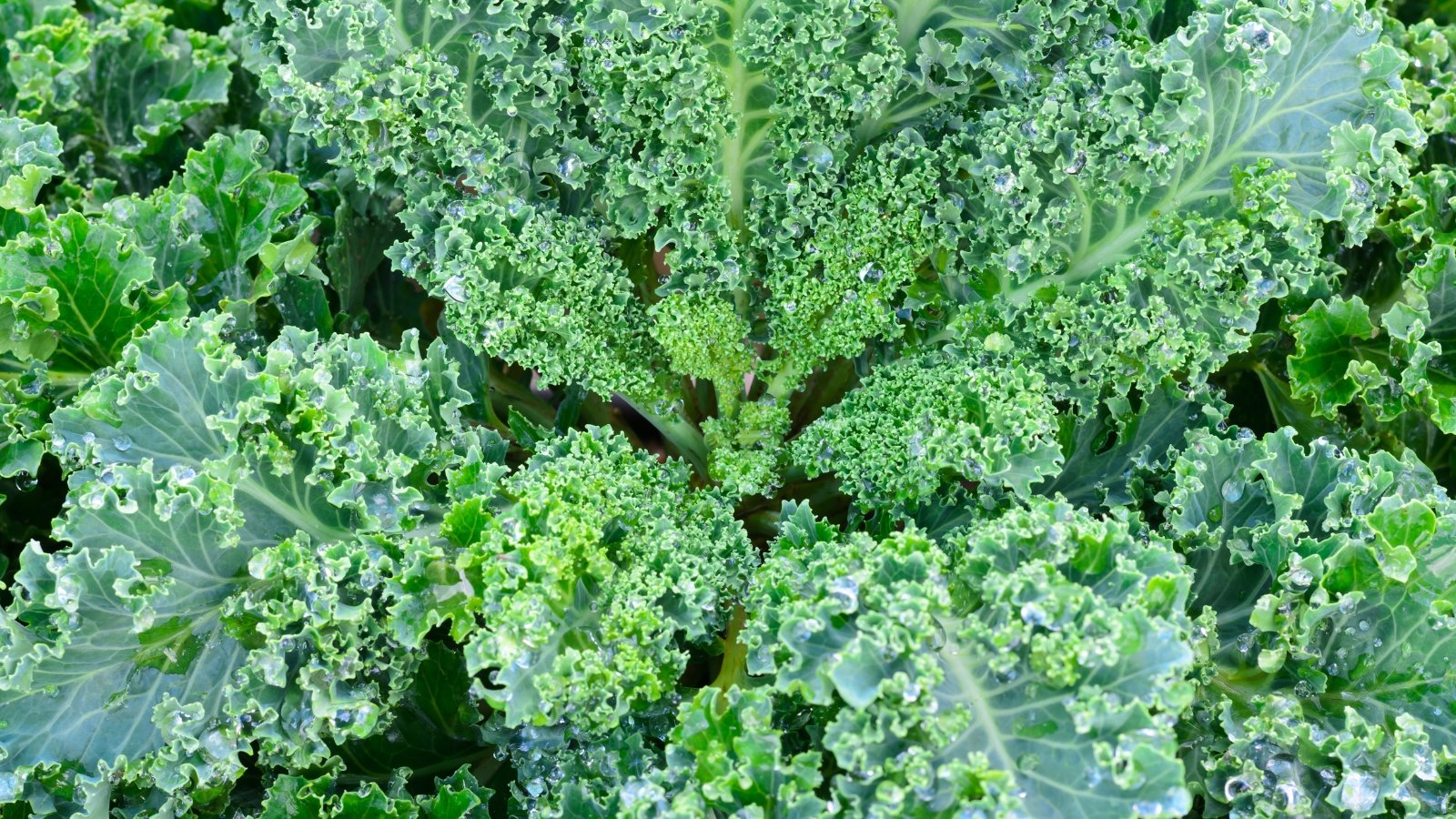 Outer leaves can be snipped for constant harvest.
Outer leaves can be snipped for constant harvest.This kale cultivar is bluer than the previous two plants. It forms curly, frilly leaves that are exceptionally frost-hardy. Snip the outer ones for continuous harvests, or chop the foliage down all at once when you need a lot of kale.
For the best flavor, leave the kale out in the garden during a light frost. Taste its leaves after the frost, and you’ll notice they’re sweeter than they were before!


 9 hours ago
4
9 hours ago
4
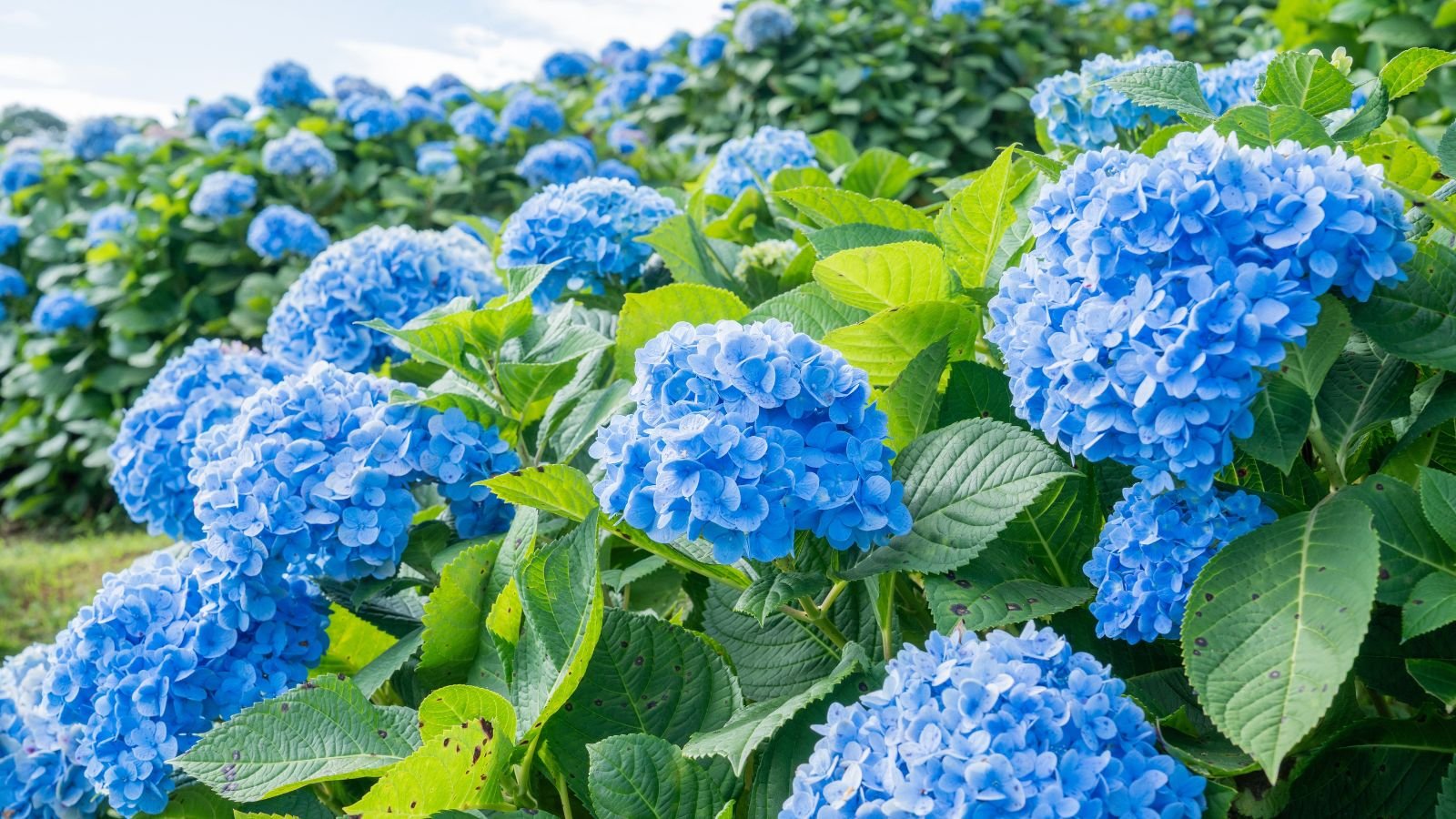
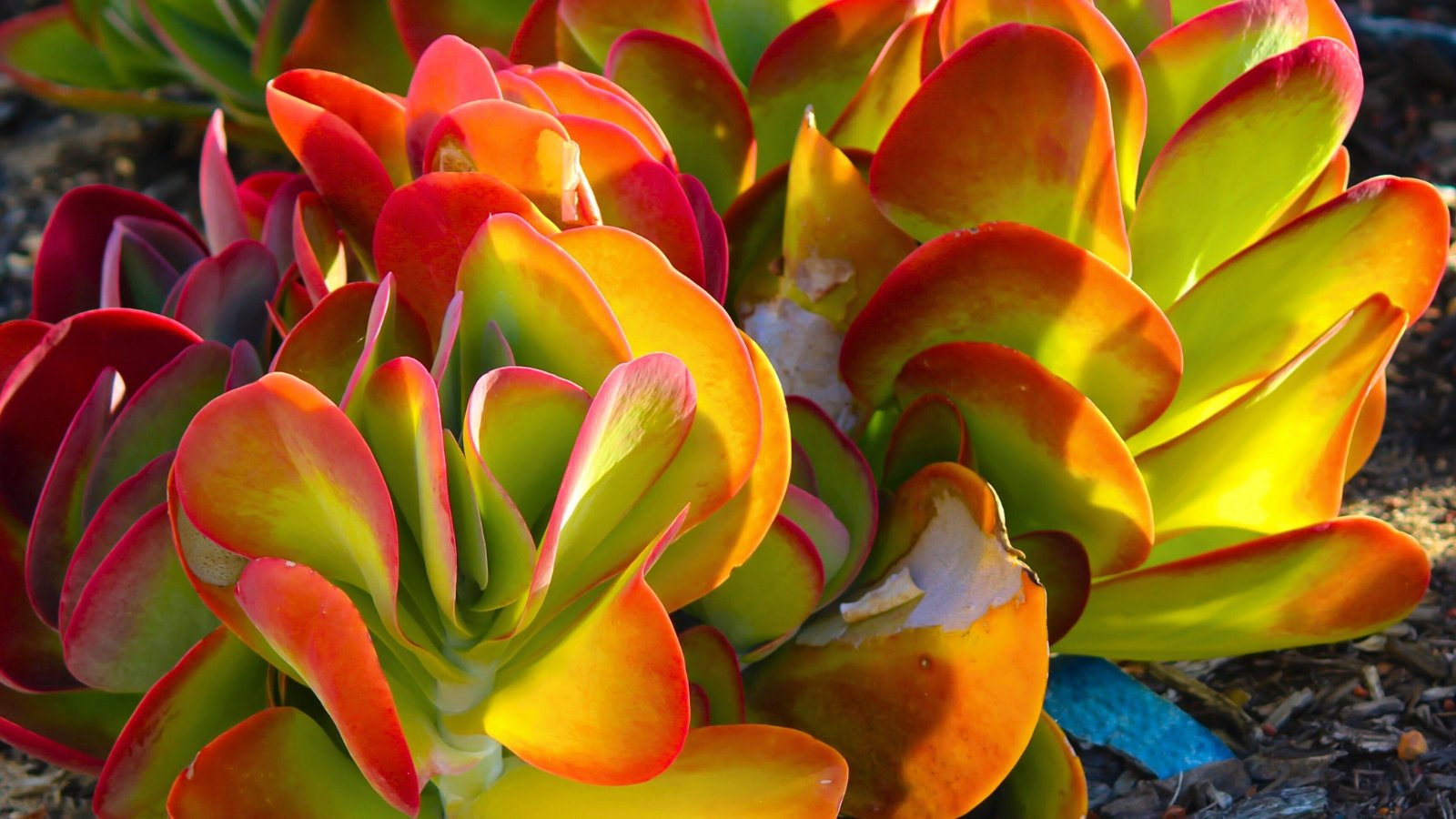
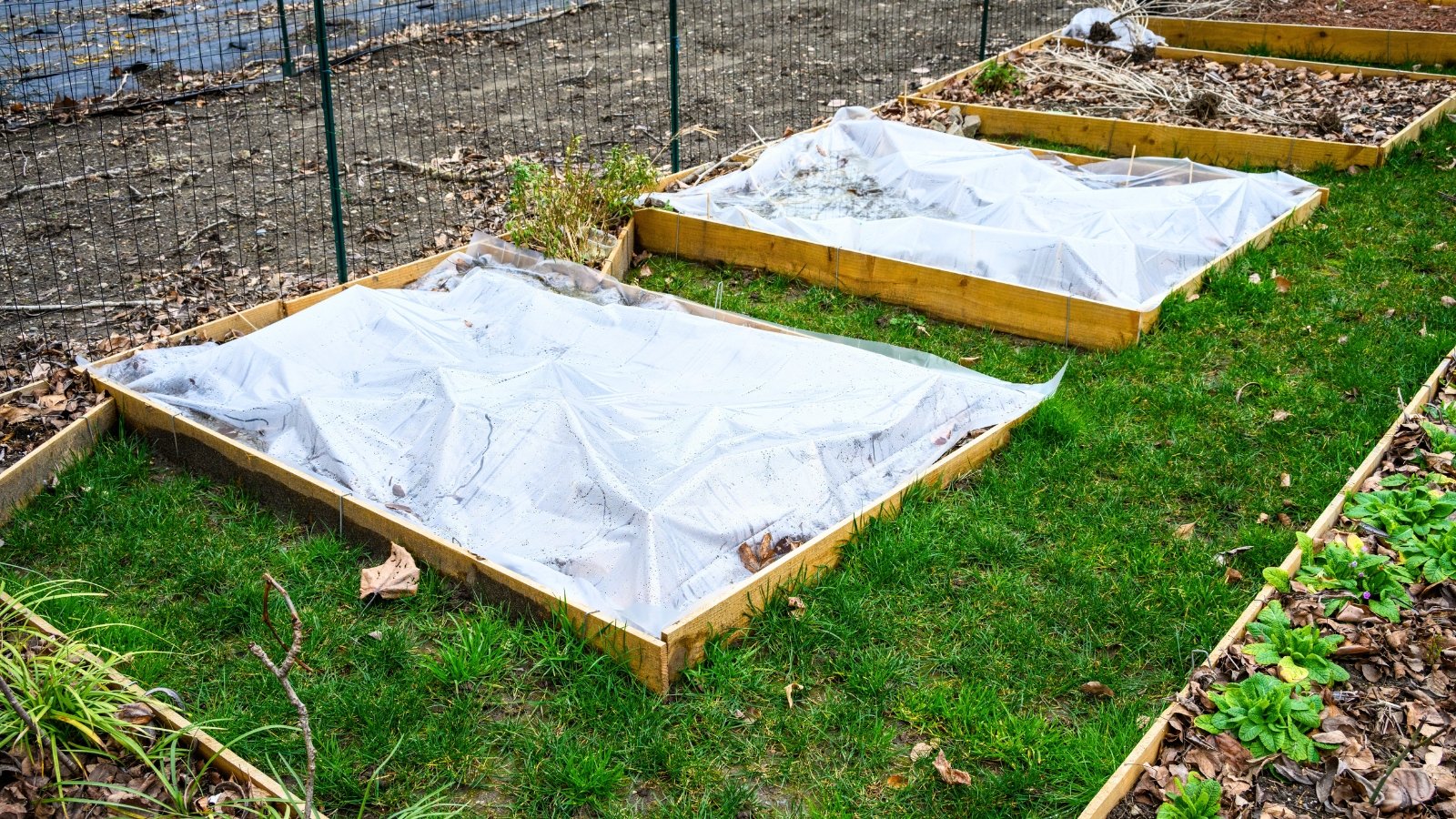


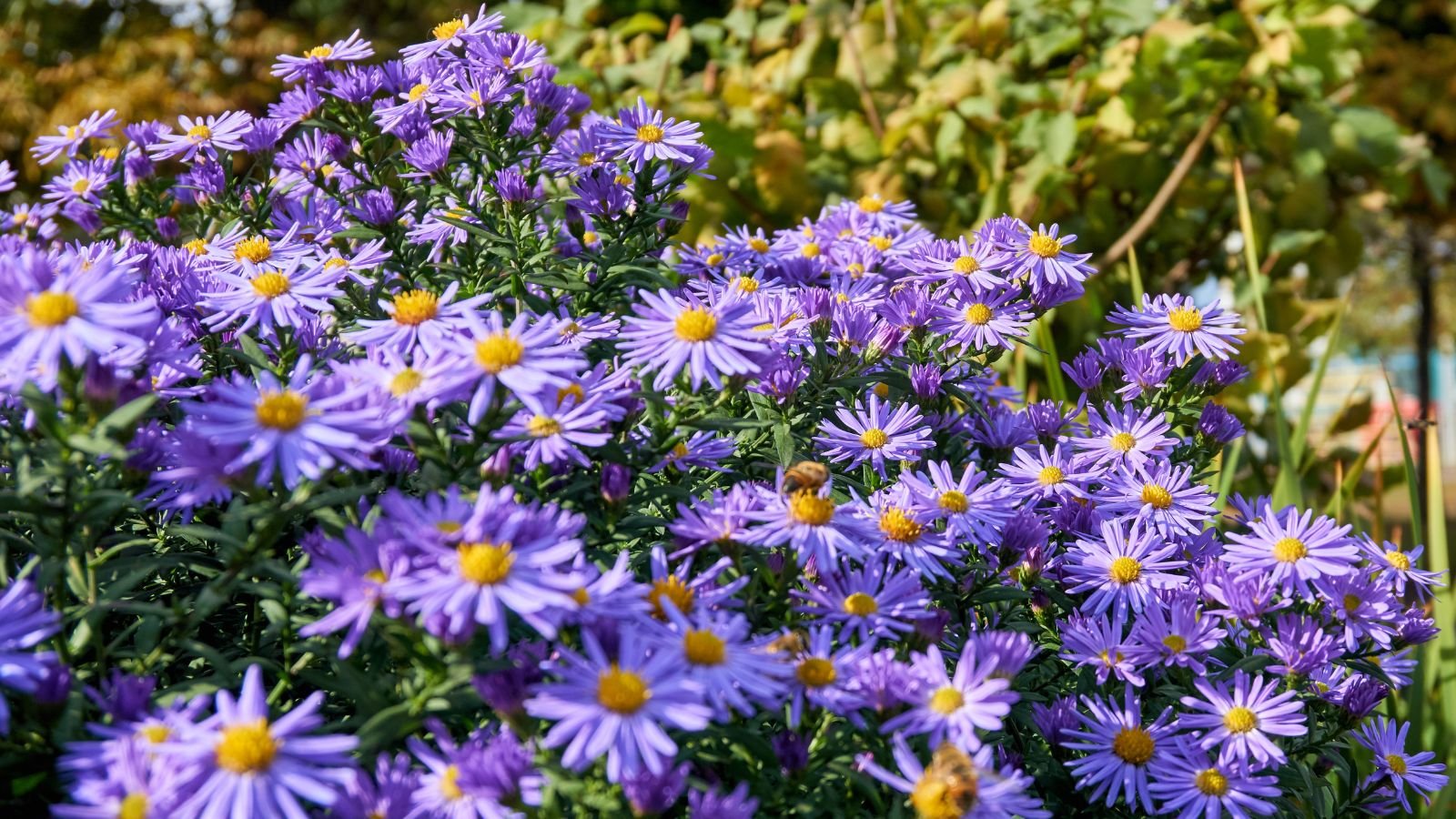















 English (US) ·
English (US) ·  French (CA) ·
French (CA) ·